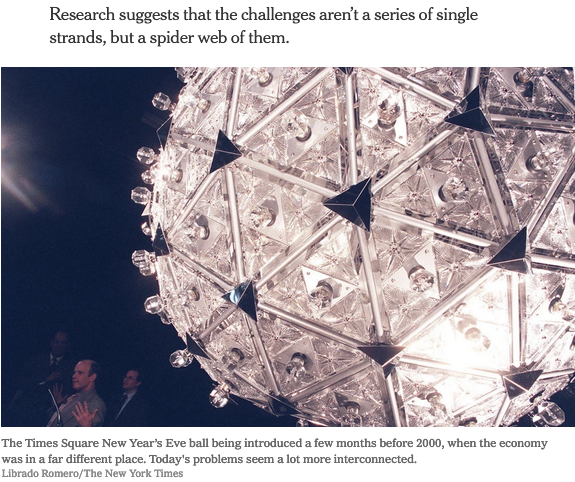If a group of time-traveling economists were to visit from the year 2000 and wanted to know how the economy had changed since their time, what would you tell them?
You might mention that economic growth has been slower than it used to be across much of the advanced world, and global inflation and interest rates have been lower. An aging population is changing the demographics of the work force. Productivity growth has been weak. Inequality has risen. And the corporate world is more and more dominated by a handful of “superstar” firms.
The time-traveling economists would find that list rather depressing, but also would tend to view each problem on the list as discrete, with its own cause and potential solutions. “What terrible economic luck,” they might say, “that all those things happened at the same time.”
But what if those megatrends are all the same problem?
Maybe, for example, inequality is contributing to weak growth and low rates because the rich tend to save money rather than spend it. Maybe productivity has been weak not by coincidence, but because weak growth has meant companies haven’t been forced to innovate to meet demand. Perhaps industry concentration has left companies with more power to set wages, resulting in more inequality and lower inflation.




